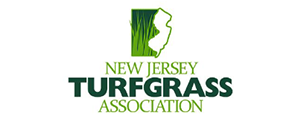A strong spring lawn is built in the fall. Here’s a simple, week-by-week plan tailored to Union County cool-season turf—so homeowners in Cranford, Scotch Plains, Summit, and Westfield can head into winter with thicker, healthier grass.
Early Fall (Weeks 1–2): Prep, Aerate, Seed
- Soil check & pH: If your lawn struggled this summer (thin color, moss, poor response to fertilizer), plan a fall lime application to balance acidity and improve nutrient uptake.
- Aeration: Choose core aeration for compacted soil or liquid aeration for a no-mess option. Either way, you’ll open pathways for air, water, and nutrients.
- Overseeding + Starter Fertilizer: Broadcast blue-tag certified seed after aeration and apply a starter fertilizer to jump-start germination and rooting.
- Irrigation setup: Program sprinklers for light, frequent cycles to keep the top ½–1″ of soil consistently moist.
Mid Fall (Weeks 3–6): Seedling Care & Growth
- Watering cadence: For new seed, water lightly 2–3x daily until germination. As blades reach 1–2″, shift to deeper, less frequent watering to encourage root depth. Aim for ~1″ total water per week (rain counts).
- Mowing: Resume mowing when grass hits ~3–3.5″. Follow the 1/3 rule—never remove more than a third of the blade. Keep sharp blades to avoid tearing tender seedlings.
- Leaf management: Don’t let leaves mat on the turf. Mulch thin layers with the mower or remove heavy covers promptly to prevent smothering and snow mold risk.
- Traffic control: Limit sports, pets, and heavy foot traffic on new seedlings until they’ve been mowed 2–3 times.
Late Fall to First Frost: Harden Off & Clean Up
- Final feeding: If your program includes a late-fall (winterizer-type) feeding, apply it once daytime temps are cool and growth slows. This fuels root reserves for spring green-up.
- Water taper: As temperatures drop and rainfall increases, reduce frequency but water deeply during dry spells so roots don’t stall.
- Final mow: Take the last mow a notch lower than your normal height (but don’t scalp). This reduces winter disease pressure and helps the lawn dry faster in spring.
- Edges & beds: Clean up borders and bed lines now; it makes spring maintenance easier and keeps leaves from blowing back onto the turf.
What to Expect (Realistic Timeline)
- By late fall: New seedlings will be visible, filling thinned areas, but won’t be at full density.
- Over winter: Root systems continue to mature below ground.
- Spring payoff: With balanced pH, fall aeration/overseeding, and proper watering, expect noticeably thicker color and better stress tolerance.
Common Fall Mistakes (Skip These)
- Watering heavily once a day (causes washouts) instead of light/frequent early on.
- Letting leaves sit for days after wind events.
- Cutting too short or mowing infrequently so you remove more than 1/3 in a single pass.
- Skipping lime where soils trend acidic—fertilizer performance suffers.

Need a hand with timing (or want us to do it all)?
Greenstripe can handle core or liquid aeration, overseeding, starter fertilizer, and lime, plus watering guidance tailored to your property. If you’re in Cranford, Scotch Plains, Summit, or Westfield, book your fall service window now—slots fill up fast before first frost.
Request a quote and we’ll build a simple plan to carry your lawn confidently into winter and set you up for a standout spring.



